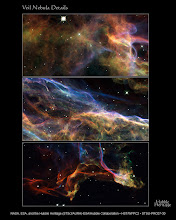More importantly, I thought about blogging because I've been thinking a lot about Princess Mononoke. I decided to test Alex's maxim, that "writing helps express our latent thoughts," although I have long agreed with this sentiment sometimes it's tough to get around to. Now that the weather is fine and I can sit and write in my hammock I thought it about time that I explore Princess Mononoke and Feenburg in a more structured way. Thoughts can be too free form and ambiguous.
I was shocked and intregued by Princess Mononoke. I was very surprised that over $20 Million was spent on CGI. I guess I didn't even think about most of the technical aspects until now. As I think back upon the film I remember it as moving very quickly. I think some of this was because of the investment in CGI. Alex mentioned that CGI was used in the creation of the demon worm-like creatures that sprout from Nago and the other King Boar (Ostakka).
Princess Mononoke was different for me because I didn't often identify with the female protagonist, San, like I usually do in Miyazaki's films.San doesn't fly, or behave in a kind human way most of the time. The end of the film was deeply unsatisfying and frustrating. I really wanted there to be a love story. Or perhaps there is a love story but it is unreconciled. There aren't really any romantic relationships in Miyazaki's films but they all seem to have the potential to be so. I guess he is the master of keeping our attention with expectations that are not fufilled. I don't know how he gets away with it. Well in this movie it seems he wants to make it a little sad at the end which is understandable for the sake of it being a serious movie about the consequences of human action and not a silly romantic story. I guess he puts the "message" of his films before the comfort of his viewer.

I think this film was a very clear break from his other films. While it contains some of the same stylistic and theme choices it is very different in content and character creation. While he considered the plot for this film in 1980 it was not released in America until the mid-1990's.
I wonder if there was a tension in his mind between this movie being a historical representation of folklore and mythology for profit and his own personal ecological message. I haven't read anything yet that suggests this but I do see it as possible that he put the ecological message in the framework of the historical context because he thought the larger population of Japan would be more likely to watch the mythological, historical context with open eyes, hearts and ears.

